I don’t always agree with ARK Invest’s CEO, Cathie Wood. But when it comes to her enthusiasm around driverless taxis… I’m on board.
Wood recently called the robotaxi market “one of the most important investment opportunities of our lifetimes.”
Citing the technology’s ability to eliminate human error and save lives, she estimated that the global robotaxi market could hit $8 to $10 trillion by 2030.
LikeFolio consumer data supports growing consumer interest in these futuristic vehicles: High-tech car demand mentions are up by 23% on a yearly average while autonomous vehicle mentions are up by 17%.
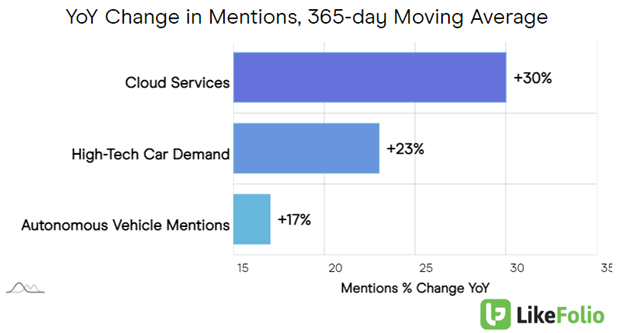
As futuristic as all this sounds, you won’t have to wait long to see one of these things on the road. As soon as this year, one company is set to deploy 100 to 150 “self-driving” robotaxis driving around Europe and Israel.
Those 100 or so robotaxis are a test, says the company’s CEO. But he predicts that hundreds of thousands of them will hit the streets by the end of the decade.
Granted, it’s too early to tell if the “test” will work. Plenty of regulatory and consumer trust hurdles remain.
But this could be the start of something big.
If the concept takes off, the tailwinds could benefit the entire autonomous vehicle (AV) industry – from titans like Tesla (TSLA) all the way down to the companies that manufacture the semiconductor chips that drive the robotaxis’ “thinking,” like the one I’m bringing you here today.
This company already commands 70% of the advanced driver assistance systems (ADAS) market – aka partially-automated driving… The tech that’s paving the way for a self-driving future.
Its AI-based chips and cloud software have been deployed in over 135 million vehicles. And that figure could swell to 270 million by the end of this year.
I’ll give you the full story right here…
Driving the Future
That “test” batch of robotaxis hitting the road overseas I mentioned? Those are equipped with a Tesla-esque full self-driving (FSD) platform created by Mobileye (MBLY).
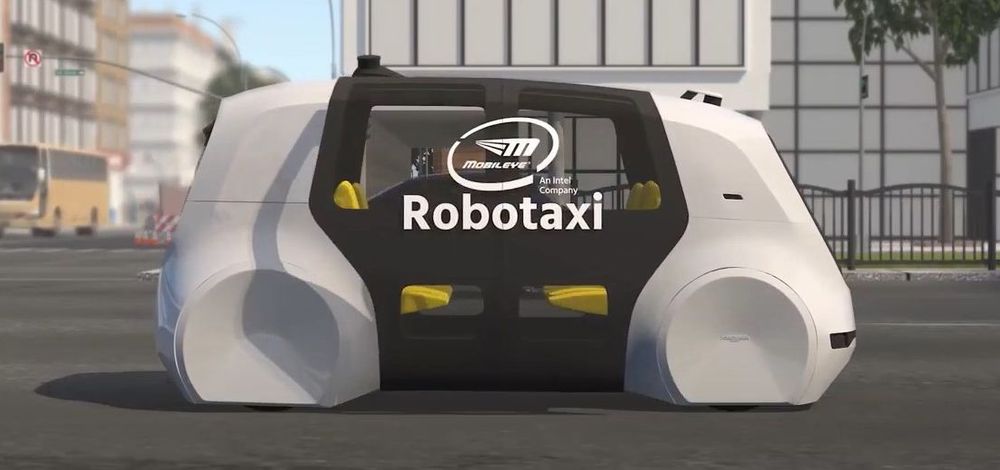
Mobileye is a self-driving tech specialist that has a massive head start in the AV and ADAS markets. Thirteen of the top 15 global automakers already employ Mobileye’s technology in their models, including Ford Motor Co. (F) and Volkswagen.
Porsche became the latest to embrace Mobileye’s new SuperVision system last month.
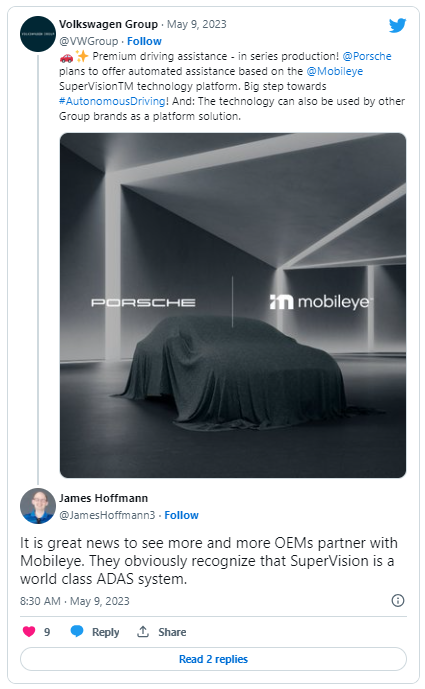
By 2026, an estimated 1.2 million cars will be using its proprietary “eyes on, hands off” system, SuperVision, which combines a camera-only sensing system with Mobileye’s key mapping and decision-making technology.
And that’ll only account for $3.5 billion of Mobileye’s $17 billion projected revenue pipeline through 2030.
I mentioned earlier that LikeFolio data supports growing interest in the AV space as a whole – but for Mobileye, awareness is accelerating at an even faster clip.
Consumer mentions of buying a vehicle equipped with Mobileye ADAS technologies are up 69% year-over-year.
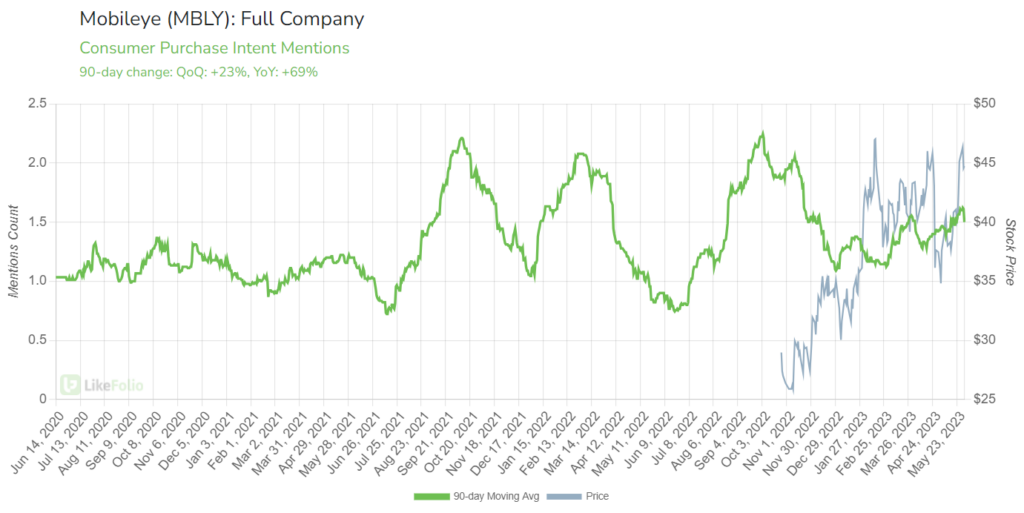
And that’s partially thanks to fellow AV player Tesla. As folks become increasingly fascinated with Tesla’s self-driving cars, they’re noticing – and seeking out – similar tech providers.
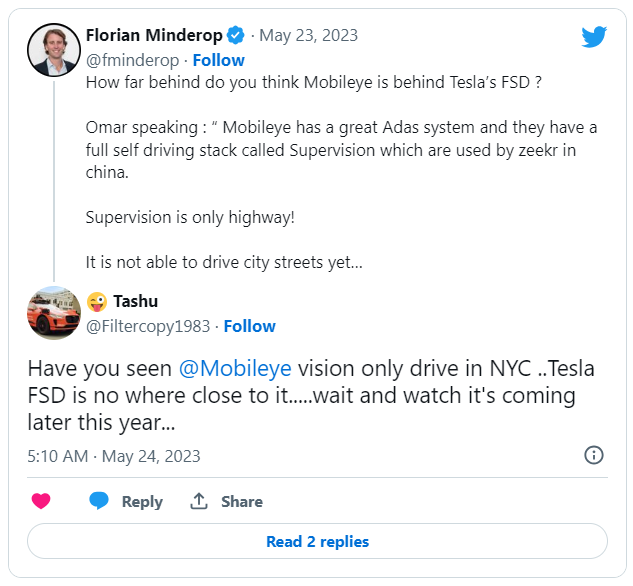
We like what we see from Mobileye so far and believe this tech company is well worth adding to your moneymaking watchlist.
Until next time,

Andy Swan
Founder, LikeFolio
